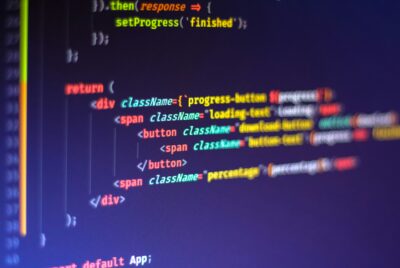Mastering Game Programming: A Beginner’s Guide
In “Mastering Game Programming: A Beginner’s Guide”, we embark on an exciting journey into the world of game development. Together, we’ll demystify the foundational concepts and techniques that go into creating engaging and interactive games. From understanding programming languages to exploring game engines and design principles, we’ll cover everything a beginner needs to get started on their game programming adventure. Join us as we dive into this captivating realm and transform our passion for gaming into the skills needed to create our own digital masterpieces. How do we learn game programming?
Mastering Game Programming: A Beginner’s Guide
Venturing into the world of game programming can feel daunting initially, but it doesn’t have to be. With the right guidance and resources, we can turn our game ideas into reality. Let’s explore how we can master game programming, step by step, in a friendly and approachable manner.

Why Should We Learn Game Programming?
Learning game programming opens up a realm of possibilities and allows us to create worlds and experiences that others can enjoy. Whether we aim to make games as a hobby or as a career, the journey can be fulfilling and rewarding. Not only does it enhance our logical thinking and problem-solving skills, but it also fosters creativity and offers a medium for storytelling.
The Basics of Game Development
Before we dive deep into the code, let’s understand the basic elements of game development. Just like any other project, developing a game involves several stages and requires collaboration between different disciplines.
- Conceptualization:
- Idea Generation: It starts with an idea. What type of game do we want to create? Is it a platformer, RPG, puzzle, or something entirely unique?
- Game Design Document (GDD): This document outlines the game’s design, mechanics, story, characters, and all other details.
- Planning:
- Resource Allocation: Determine what resources we need, such as tools, software, and team members (if applicable).
- Timeline: Establish a timeline for development milestones and a tentative release date.
- Programming and Development:
- Choosing a Language and Engine: Decide on the programming language and game engine that best suit our project needs.
- Writing Code: Begin coding the game mechanics, physics, and other functionalities.
- Art and Sound:
- Graphics: Design characters, environments, and UI elements.
- Audio: Create or source music, sound effects, and voiceovers.
- Testing:
- Alpha and Beta Testing: Thoroughly test the game to identify and fix bugs.
- User Feedback: Gather feedback from testers to improve the game experience.
- Release and Maintenance:
- Launch: Release the game to the public.
- Post-launch Support: Address any issues, release updates, and possibly add new content.
Choosing the Right Programming Language
Selecting the right programming language is crucial for our game development journey. Different languages offer various benefits, and our choice may depend on the type of game we wish to create. Here are some popular choices:
| Programming Language | Features and Use Cases |
|---|---|
| C++ | High-performance games, commonly used in AAA titles, complex simulations. |
| C# | User-friendly, widely used with Unity engine, suitable for indie and mid-range games. |
| Python | Great for beginners, used in educational games, quick prototyping. |
| JavaScript | Ideal for web-based games, easily integrates with HTML/HTML5. |
| Java | Known for platform independency, used in Android game development. |
Understanding Game Engines
Game engines are essential tools that provide the framework and tools needed to build games efficiently. Let’s take a look at a few popular game engines:
| Game Engine | Features and Use Cases |
|---|---|
| Unity | User-friendly, extensive community and resources, supports 2D and 3D games, suitable for beginners. |
| Unreal Engine | High-quality graphics, suitable for AAA titles, has a steeper learning curve. |
| Godot | Open-source, flexible, supports 2D and 3D games, great for indie developers. |
| GameMaker Studio | Ideal for 2D games, drag-and-drop interface, easy for beginners. |
| CryEngine | Renowned for rendering high-quality visuals, suitable for FPS and 3D games. |

Setting Up Our Development Environment
Before we start coding, we need to set up our development environment. This involves installing the necessary software and tools.
- Integrated Development Environment (IDE):
- An IDE streamlines the coding process by providing tools such as code editor, debugger, and compiler in one package. Popular choices include Visual Studio, JetBrains Rider, and PyCharm.
- Game Engine SDK:
- Download and install the SDK for our chosen game engine. For example, if we choose Unity, we would download the Unity Hub.
- Version Control System:
- A version control system like Git allows us to manage changes to our code and collaborate with others. Tools like GitHub and GitLab are commonly used.
- Graphic and Audio Tools:
- Software like Photoshop or GIMP for graphics, and Audacity or FL Studio for audio, will help us create the visual and auditory elements of our game.
Learning through Tutorials and Courses
One of the best ways to learn game programming is through tutorials and online courses. These resources offer step-by-step guidance and practical experience.
- Online Tutorials: Websites like YouTube, Codecademy, and Khan Academy provide free tutorials on various aspects of game programming.
- Online Courses: Platforms like Coursera, Udemy, and edX offer comprehensive courses taught by industry professionals. These courses often include projects and assignments to reinforce learning.
- Books: There are several excellent books on game development, such as “Game Programming Patterns” by Robert Nystrom and “Introduction to Game Design, Prototyping, and Development” by Jeremy Gibson Bond.

Building Our First Game
Now, let’s get our hands dirty and build our first game. Don’t worry about making it perfect; the goal here is to learn and gain experience.
- Start Simple:
- Choose a simple game idea, such as a text-based adventure game or a classic Pong clone. This will help us focus on fundamentals without getting overwhelmed.
- Break it Down:
- Divide the game into manageable modules. For instance, in a Pong game, we can break it down into player paddles, ball movement, and score tracking.
- Implement Basic Mechanics:
- Start by writing code for the core mechanics. For our Pong example, we’d begin with paddle movement and ball bouncing.
- Add Features Gradually:
- Once the basic mechanics are working, we can gradually add more features, such as increasing ball speed or adding power-ups.
- Test Frequently:
- Test our game regularly to catch bugs early and ensure everything works as expected.
The Art of Debugging
Debugging is an essential skill in game programming. It involves identifying and fixing bugs or errors in our code to ensure the game runs smoothly.
- Common Debugging Techniques:
- Print Statements: Use print statements to display variable values and track program flow.
- Breakpoints and Stepping: Set breakpoints in our IDE to pause execution and inspect the state of the game.
- Error Logs: Check error logs provided by the game engine to identify issues.
- Debugging Tips:
- Stay Organized: Keep our code well-organized and commented, making it easier to identify where bugs might be.
- Work on One Thing at a Time: Focus on fixing one issue at a time rather than trying to solve everything at once.
- Take Breaks: Sometimes stepping away from the code for a while can provide a fresh perspective and help us find the solution.
Collaborating with Others
Collaboration is a key aspect of game development, especially if we’re working on larger projects. Engaging with others brings diverse skills and perspectives that can enhance our game.
- Joining a Team: Look for opportunities to collaborate with others. This could be in person or through online platforms such as forums, social media groups, or game development communities.
- Communication Tools: Utilize tools like Slack, Discord, or Trello to communicate and manage tasks effectively.
- Sharing Assets: Use shared repositories like GitHub or cloud storage services to share assets and code with our team.
Exploring Advanced Topics
Once we’re comfortable with the basics, we can start exploring more advanced topics in game programming to enhance our skills and create more complex games.
Physics and Mathematics
Understanding the fundamental concepts of physics and mathematics is crucial for creating realistic game mechanics and simulations.
- Vector Math:
- Vectors are essential for handling positions, directions, and movements in games. Learning vector operations like addition, subtraction, and dot product will be helpful.
- Collision Detection:
- Implementing accurate collision detection ensures that game objects interact realistically. Learn about bounding boxes, circles, and more complex shapes.
- Physics Engines:
- Many game engines have built-in physics engines (e.g., Unity Physics, Box2D) that handle complex physics calculations, such as gravity, friction, and inertia.
Artificial Intelligence (AI)
AI plays a significant role in creating challenging and engaging gameplay experiences by controlling non-player characters (NPCs).
- Pathfinding:
- Techniques like A* (A-star) algorithm help NPCs navigate the game world efficiently.
- State Machines:
- State machines define different states for NPCs (e.g., idle, patrol, attack) and transitions between them.
- Behavior Trees:
- Behavior trees provide a structured way to create complex AI behavior that is easier to manage and debug.
Multiplayer Networking
Creating multiplayer games adds a new dimension of engagement but comes with additional challenges.
- Client-Server Model:
- Understanding the client-server architecture is crucial for designing multiplayer games. The server handles game state, while clients connect to play.
- Synchronization:
- Ensure that the game state remains consistent across all clients. Techniques like interpolation and extrapolation help with smooth movement and actions.
- Security:
- Prevent cheating and ensure data security by implementing authentication, encryption, and validation.
Staying Updated in the Game Industry
The game industry is constantly evolving, with new tools, techniques, and trends emerging regularly. Staying updated is vital for continuous growth in our game programming journey.
- Join Online Communities:
- Engage with communities on platforms like Reddit, Stack Overflow, and specialized game development forums.
- Attend Conferences and Workshops:
- Participate in events like the Game Developers Conference (GDC) and local meetups to network with other developers and learn from experts.
- Follow Industry News:
- Keep an eye on industry news through websites like Gamasutra and Kotaku to stay informed about the latest trends and technologies.
- Read Research Papers:
- Academic research papers provide insights into cutting-edge developments in game technology and theory.
The Economics of Game Development
Understanding the financial aspects of game development ensures we can create games sustainably and potentially monetize our work.
Budgeting
Effective budgeting helps keep our project on track and prevents overspending.
- Estimate Costs:
- Consider costs such as software licenses, hardware, marketing, and wages (if hiring team members).
- Allocate Funds:
- Allocate funds to different aspects of the project based on priority and necessity.
- Monitor Expenses:
- Regularly track expenses to ensure we’re staying within budget and making adjustments as necessary.
Monetization
There are several ways to monetize our game, depending on our goals and target audience.
- Paid Games:
- Sell the game for a one-time purchase price on platforms like Steam, itch.io, or mobile app stores.
- Freemium Model:
- Offer the game for free with in-game purchases for additional content, cosmetics, or power-ups.
- Advertisements:
- Integrate ads within the game, using services like Google AdMob, to generate revenue.
- Crowdfunding:
- Platforms like Kickstarter and Patreon can help raise funds by directly engaging with potential players and supporters.
Conclusion
Mastering game programming is a journey that involves learning, creativity, and perseverance. With the right resources, dedication, and a passion for gaming, we can bring our ideas to life and create engaging, enjoyable experiences for players around the world. Remember, the key is to start small, gradually build our skills, and never stop learning. Happy coding, and may our games be ever-played!




